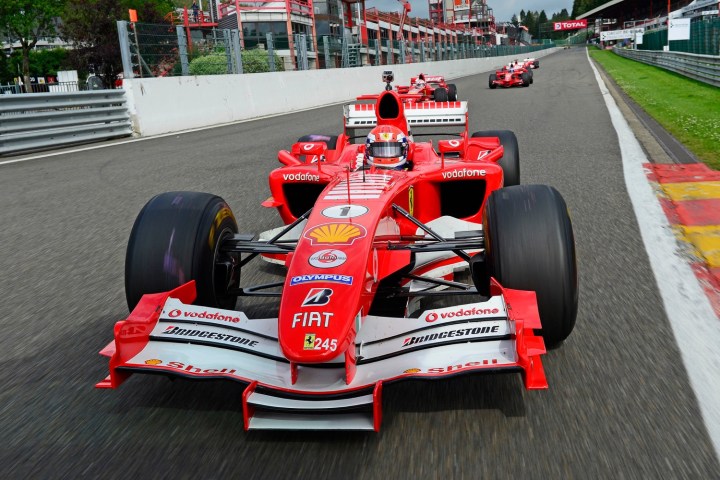
Ferrari will stop selling its old F1 cars to private buyers because the newer cars are just too complex, Ferrari F1 test driver Marc Gené told Autocar at a preview of the new Ferrari World theme park in Barcelona. The F138 used during the 2013 season will be the last F1 car offered for sale, he said.
“They are just too difficult to maintain,” Gené said of F1 cars from the 2014, 2015, and 2016 seasons. For the 2014 season, F1 implemented rules requiring all teams to use full hybrid powertrains, with 1.6-liter turbocharged V6 engines assisted by electric motors. Those rules, which are still in effect, help lower F1’s carbon footprint, but also create cars that are much more complicated than previous generations.
“Just to fly them over, the battery needs some extra safety requirements for the plane,” Gené said. Newer hybrid F1 cars have onboard battery packs that store electricity, which can be recovered from the brakes or the turbocharger. The 2013 F138 used a much simpler form of electric assist, working with a 2.4-liter V8. F1 says the current hybrids produce the same power as the old V8 cars, but are 35 percent more fuel efficient.
Under the current F1 Clienti program, Ferrari routinely flies retired F1 cars around the world for owners to drive. The automaker organizes its own events, but owners can also have cars delivered to a track of their choice. Ferrari sends a team of technicians with each car, and offers tutoring from Gené and others, so owners can live out their Michael Schumacher fantasies without crashing.
Ferrari is selling the F138 right now, and prices are going up in anticipation of the end of F1 car sales, Gené said. Since F1 Clienti started in 2003, only cars at least two years old have been offered for sale. This is to keep the latest equipment from falling into the hands of rival teams, according to Ferrari.
Editors' Recommendations
- Ferrari customers targeted in ransom-related cyberattack
- OnePlus 8 design partially revealed, but leaked prices may kill the hype
- Formula One teams are using racing tech to tackle coronavirus
- F1 has plans to race the world’s first net zero carbon engine in 2030
- Formula One is adding cost caps in 2021, so teams are spending even more for 2020


